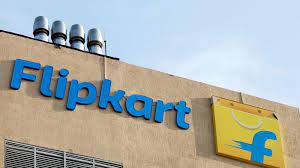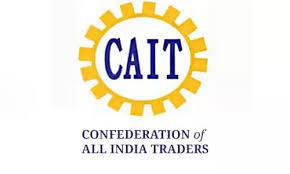- E-commerce has changed the way businesses operated. According to estimates, the e-commerce market size in India will reach US$ 111.40 billion by 2025. The key drivers of the incremental growth will be fashion and grocery. The industry will grow to US$ 350 billion by 2030.
- In October 2021, the festive season boosted e-commerce sales to US$ 4.6 billion. The festive season in 2021 helped the e-commerce sector to grow by 23% on yearly basis. Despite, COVID-19 challenges, the e-commerce market size in India continues to grow at 5%.
- As per estimates, the retail online penetration will reach 10.7% by 2024 versus 4.7% in 2019. The ‘Digital India‘ campaign will help the country create a trillion-dollar economy by 2025. Additionally, an increase in internet and smartphone penetration triggered the growth. The internet connections in India grew significantly to approximately 785 million.
- The Indian e-grocery market will reach US$ 18.2 billion by 2024 as against US$ 1.9 billion in 2019. In the last quarter of 2020, India’s e-commerce orders grew by 36%. The largest beneficiaries were the personal care, beauty and wellness segment. The digital economy will reach US$ 800 billion by 2030 due to the adoption of e-commerce and Edtech.
- After China and US, India is in the third position in terms of the largest online-shopper base of 140 million in 2020.
- Launch of the 4G network, rising smartphone penetration, increasing consumer wealth, and adoption of 5G smartphones even before the launch of next-gen broadband technology, the e-commerce market size in India will increase to US$ 200 billion by 2026.
- Flipkart, Amazon India, and Paytm Mall are the drivers for the above reasons.

Developments leading to the growth of the e-commerce market size in India
- CARS24, India’s largest used car e-commerce platform, raised US$ 450 million via Series F round and debt.
- Amazon launched Prime Video and MiniTV in India. It gives a seamless experience and access to popular shows consumers.
- Bikayi, a mobile commerce enabler, raised US$ 10.8 million via Series A round.
- Flipkart raised US$ 3.6 billion from various sources like private equities, sovereign funds, and Walmart.
- Moreover, Flipkart strengthened its grocery infrastructure by expanding its fulfilment centre capacity by over 8 lakh square feet.
- Blinkit (earlier known as Grofers) entered the unicorn club after raising US$ 120 million from Zomato.
- Mastercard invested in Instamojo, a payment firm that helps digitize stores and process payments without interruptions.
- Flipkart’s alliance with the Adani group will improve logistics and data centers. It will also create employment opportunities.
- ElasticRun, a Kirana commerce platform, raised US$ 75 million.
- Purplle, an online beauty store, raised US$ 45 million from Sequoia Capital India, JSW ventures, and Blume Ventures.
- Nykaa, an online beauty store, went public and got listed at a hefty premium of 77.87%.
- Confederation of All India Traders (CAIT) represents 80 million traders and 40,000 trader associations. They launched ‘Bharat E-market’, a mobile phone app that aims to help small traders to sell their products online.




Government Initiatives
- GeM is a government e-marketplace that facilitates the online procurement of goods and services required by various government departments/PSUs. It signed a Memorandum of Understanding (MoU) with the Union Bank of India for a cashless, transparent and paperless payment system.
- The National Retail policy promotes the e-commerce industry in India and focuses on five areas. The aspects are- ease of doing business, digitization of retail, open network for digital commerce, rationalization of license process, and administrating of online and offline retail in an integral manner.
- The Ministry of Consumer Affairs has notified the Consumer Protection (e-commerce) Rules 2020. It directs companies to mention the country of origin. In addition, the companies also have to list products and reveal the parameters that go behind determining product listings.
- The government launched a ‘Startup portal’ that helps startups and crowdfunding ventures grow and develop. It focuses on three areas: simplification, funding support, and incentives.
- The Digital India campaign ensures that government services are provided to all citizens electronically. It aims to transform India into a digitally empowered society and knowledge economy.
- Make in India is a government initiative that facilitates investment, fosters innovation, and enhances skill development by making India a manufacturing hub. Moreover, the government incentivizes companies to develop and assemble products in India.
- Amendments were made to the equalization rules. The government mandates foreign e-commerce platforms in India to have PAN (Permanent Account Number). It also imposed a 2% tax on goods and services sales via a non-resident e-commerce platform.
- To increase foreign players in E-commerce, the government hiked the limit of FDI in the e-commerce B2B model to 100%.
- In addition, the government is making heavy investments in rolling out 5G networks that will eventually boost e-commerce in India.



Recent news related to the e-commerce industry in India
Amazon: one of the major contributors to the growing e-commerce market size in India
Over 1,00,000 Indian exporters can sell abroad because of Amazon’s Global Selling platform. It is an initiative of Amazon that began in 2015. During its launch, it had only 100 exporters. It eventually became a major contributor to the growing e-commerce market size in India. Amazon assisted Indian exporters in connecting to global clients via its 17 international websites and marketplaces. This initiative also contributes to the Make in India campaign because over 140 million Made in India items are available to Amazon customers in over 200 countries.
The number of vendors has increased by 20% on yearly basis since January 2020. Non-metros are the major vendors, with many being first-generation entrepreneurs. The total exports exceed US$ 3 billion with the help of the initiative. Amazon has created globally recognized brands. They are also organizing webinars and on-the-ground events to raise awareness about e-commerce. Amazon has also collaborated with its peers, industry groups, export councils, and government entities.

India to become the 5th largest beauty market
According to Nykaa, India is set to overtake European nations and become the fifth-largest beauty market soon. The Indian beauty market is becoming more organized. As per the size and scale, it is the third-largest market in the world but a lot is still unorganized and needs to be shifted. 80-85% of the market remains unorganized. But it is rapidly shifting to an organized one.

India’s digital-first brands have US$ 250 billion opportunities by 2030
According to the RedSeer report, India has created a US$ 250 billion opportunity in the social and video commerce segment. In the last few years, multiple US$ 100 million revenue-earning firms have developed across this segment. Above all, they have their winning playbook and unique business models. According to data, consumers prefer quality over price. Moreover, there is a high likelihood of repurchasing.

India already has 8 unicorns in 40 days in 2022
Polygon (blockchain), ElasticRun (B2B e-commerce), Darwinbox (HRTech), LEAD (Edtech), Fractal (advance analytics), LivSpace (home interior and renovation), Dealshare (social e-commerce), and Xpressbees (logistics) are startups that have turned into unicorns in the first 40 days of 2022.
Xpressbees became a unicorn with a valuation of US$1.2 billion. It raised a Series F round from private equity firms Blackstone Group, ChrysCapital, and TPG growth. It was founded in 2015 and operates in 3000 cities. The unicorn distributes over 1.5 million parcels every day. The total funds raised to date are US$ 500 million.





